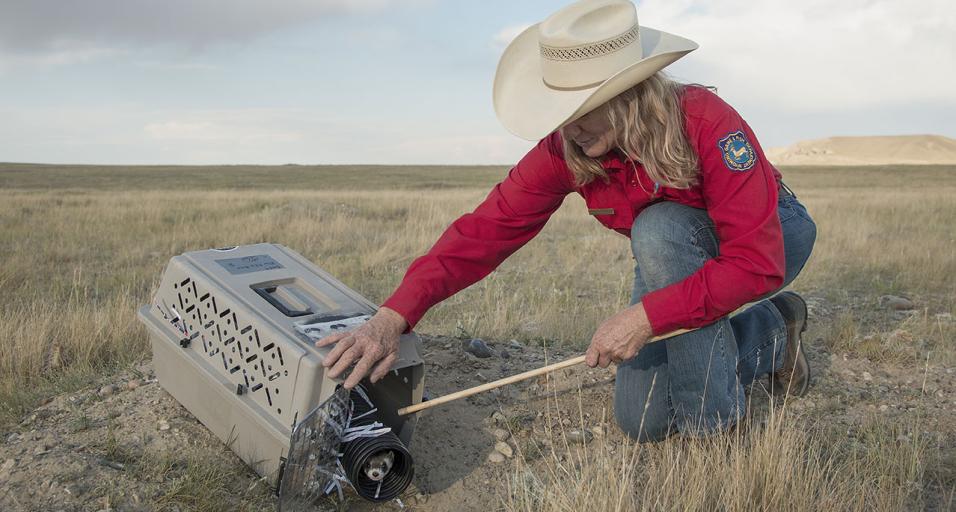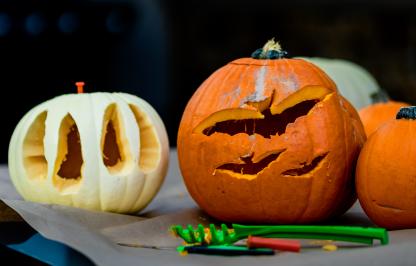Black-footed ferrets, mule deer migrations, and grizzly bear management were among the top issues in 2016 for the Wyoming Game and Fish Department.
“It’s been a memorable year for Wyoming’s wildlife and those who support this incredible resource,” said Game and Fish Director, Scott Talbott. “It’s rewarding to look back on a year’s accomplishments for our state-due to the great collaborative work between the public, partners and Game and Fish.”
The following is a snapshot of notable accomplishments and impactful events this year in Wyoming conservation.
Black-footed ferrets return to Meeteetse
On July 26, Game and Fish, in partnership with the U.S. Fish and Wildlife Service, the owners of two ranches and many other supporters, released 35 black-footed ferrets. The ferrets were released on the Lazy BV and Pitchfork Ranches, outside Meeteetse, Wyoming, where the species was rediscovered in 1981 after having been believed to be extinct. The release represented decades of multi-agency recovery efforts. In the fall, population surveys reported report higher than average post-release ferret survival.
Deer and pronghorn populations rise
The mule deer and pronghorn populations rose as a result of good spring moisture for the past three years. Early spring moisture enhanced wildlife fawn production. The moisture received during those months contributed to nutritious forage production at a time of year when wildlife need it the most-after a long Wyoming winter. Mule deer in particular saw good fawn:doe ratios of 75 per 100, exceeding the objective of 66 fawns for every 100 does to maintain or increase the population size.
New migration corridor strategy implemented
The Wyoming Game and Fish Commission approved the Migration Corridor Strategy, a four-step strategy that identifies and protects big game migration routes. The Sublette Mule Deer Herd Corridor was the first ungulate migration corridor designated. The corridor is 160 miles long and spans over 830,000 acres, from the Hoback River near Jackson to around the town of Pinedale, continuing south to the Red Desert outside Rock Springs. Next steps for managing the Sublette corridor will include further GPS data analysis and other strategic assessments. The corridor also included the newly-designated Luke Lynch Habitat Management Area, an area identified as a migration bottleneck.
More people fishing and hunting in Wyoming
More people bought fishing licenses in Wyoming according to recent Wyoming Game and Fish Department data. The increase of 6% in sales in 2015 represents a growing interest in fishing as well as further budget stabilization for Game and Fish. Final numbers for 2016 are not yet available, but early results show interest in hunting and fishing increase stayed steady or increased. As a result of the good moisture, rivers, lakes and reservoirs were full of water and native and sportfish were abundant.
“Wyoming is fortunate to have such active hunters and anglers. The vast majority of funding for managing all wildlife comes from sportsmen and women, and in Wyoming that equates to 75-80 percent of our total revenue for wildlife management. Thank you to all the hunters and anglers who spend hard-earned money to enjoy this opportunity and to support the wildlife Wyoming’s residents and visitors care about so much,” said Talbott.
CWD management plan updated
To provide flexible and adaptable direction pertaining to the spread, prevention and management of chronic wasting disease (CWD), Game and Fish updated its CWD management plan in 2016. Game and Fish worked to raise more awareness about CWD for hunters and the public, encouraging reports of sick deer, elk and moose. Additionally, the Game and Fish Commission gave direction to further advance Wyoming’s approach to CWD and a team is working on this now.
Grizzly bear management plan proposed
In 2016, Game and Fish moved forward in recognizing the next steps in grizzly bear recovery efforts. The Wyoming Game and Fish Commission voted to approve an update to Wyoming’s Grizzly Bear Management Plan and the three-state Memorandum of Agreement with Montana and Idaho. The plan outlines how Wyoming would manage grizzly bears when they come off of the endangered species list.
Talbott said, “Grizzly bear recovery is an achievement to celebrate, and we want to express our appreciation to the people in Wyoming and across the country who have contributed to this feat.”
Coming in 2017
Looking ahead to 2017, Game and Fish is excited to prioritize education and public engagement efforts. Planning is ongoing for a conservation education Expo for the spring, as well as a new statewide cohort of participants for Becoming an Outdoor Woman (BOW). Game and Fish will also be reaching out to the public throughout the year to learn more about public priorities for wildlife and conservation.
Year in review for wildlife of Wyoming
Wyoming Game and Fish (307) 777-4600



